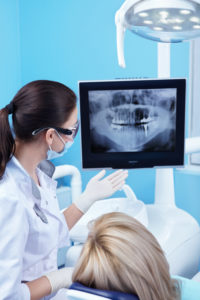IV sedation for children and adults has become revolutionary, making complex dental treatments easier. To ensure the safety and efficiency the American Academy of Pediatric Dentistry list goals and guidelines for monitoring pediatric dental patients under IV sedation.
The goals of sedation in the pediatric patient for diagnostic and therapeutic procedures are as follows:
1.  To guard the patient’s safety and welfare
To guard the patient’s safety and welfare
2. To minimize physical discomfort and pain
3. To control anxiety, minimize psychological trauma, and maximize the potential for amnesia
4. To modify behavior and/or movement so as to allow the safe completion of the procedure
5. To return the patient to a state in which discharge from medical/dental supervision is safe, as deter- mined by recognized criteria.
The safety of IV sedation for dentistry has come under fire, with children suffering serious complications under IV sedation during dental procedures.
These complications are associated with the single “operator anesthetist”, something that doesn’t happen in medical practice. It can be compared to a surgeon doing an operation on a patient while administering the sedation. This only occurs in the dental field, everywhere else must involve a nurse anesthetist or qualified anesthesiologist.
Whether if it is a child or adult, safety should be the top priority. A dentist who is doing too much at one time, even if it is directing the actions of a medical assistant, can compromise the safety of the patient.
An article in Anesthesiology News, brings up the topic of safety during IV sedation and offers an effective solution.
The ADA guidelines list the minimal number of individuals required for each of the various levels of sedation, as well as for general anesthesia. “For minimal and moderate sedation, the sedation-trained dentist needs an assistant who is trained in Basic Life Support for Healthcare Providers, in case of an emergency,” dentist anesthesiologist Joel M. Weaver, DDS, PhD, a spokesman for the American Dental Association (ADA) said. For deep sedation and general anesthesia, the anesthesia-trained dentist needs the same type of assistant, plus another assistant “whose duty is to monitor the patient and the monitoring equipment to assure that the patient’s vital signs are stable throughout the procedure.
At Blue Sky Solutions Anesthesia Associates, our expectations are high and yours should be too when choosing to have sedation for your dental procedure. You deserve to have individual attention and an experienced nurse anesthetist providing your sedation whose only concern is monitoring you.
We follow the strict American Dental Association guidelines and protocols throughout the procedure. We are passionate about helping New Hampshire residence, including the cities of Barrington, Dover, Concord, Amherst, receive the dental care they need.


